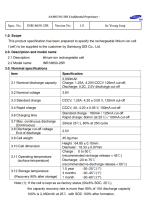Wallykl
New Member
- Region
- USA
To newbs like me that are dabbling—researching how safe or sound it may be to increase the amp rate I charge my 52V, 20 amp-hr Valstrom battery. Came with a 3 amp charger accepting 120-240V input. As I read various threads on pros/cons of sending the battery higher amperage, my head starts to spin. Then I came across a statement that seemed to be implied as a safe rule of thumb. Went something like—sending your battery “up to, but no more than 30% of its amp-hr rating” usually is safe. So in my words—my 20 amp-hr battery should be safe to apply a 6amp charge (30% of amp-hr capacity) without harming me, others, or the battery?
Why do I ask? Seems like a rule of thumb is easier for my failing mind to remember. Or, is this “rule” just hogwash. I’m interested because this would be quite valuable by cutting my charging time in half, at literally no increased expense (of same physical size and relative cost of a 3 vs 6 amp charger).
Or should I quit before I hurt somebody? Never imagined that diving into e-bikes would require me to become adept at deciphering new tecnical nomenclature! But—it has been a blast!
Why do I ask? Seems like a rule of thumb is easier for my failing mind to remember. Or, is this “rule” just hogwash. I’m interested because this would be quite valuable by cutting my charging time in half, at literally no increased expense (of same physical size and relative cost of a 3 vs 6 amp charger).
Or should I quit before I hurt somebody? Never imagined that diving into e-bikes would require me to become adept at deciphering new tecnical nomenclature! But—it has been a blast!
Last edited:
